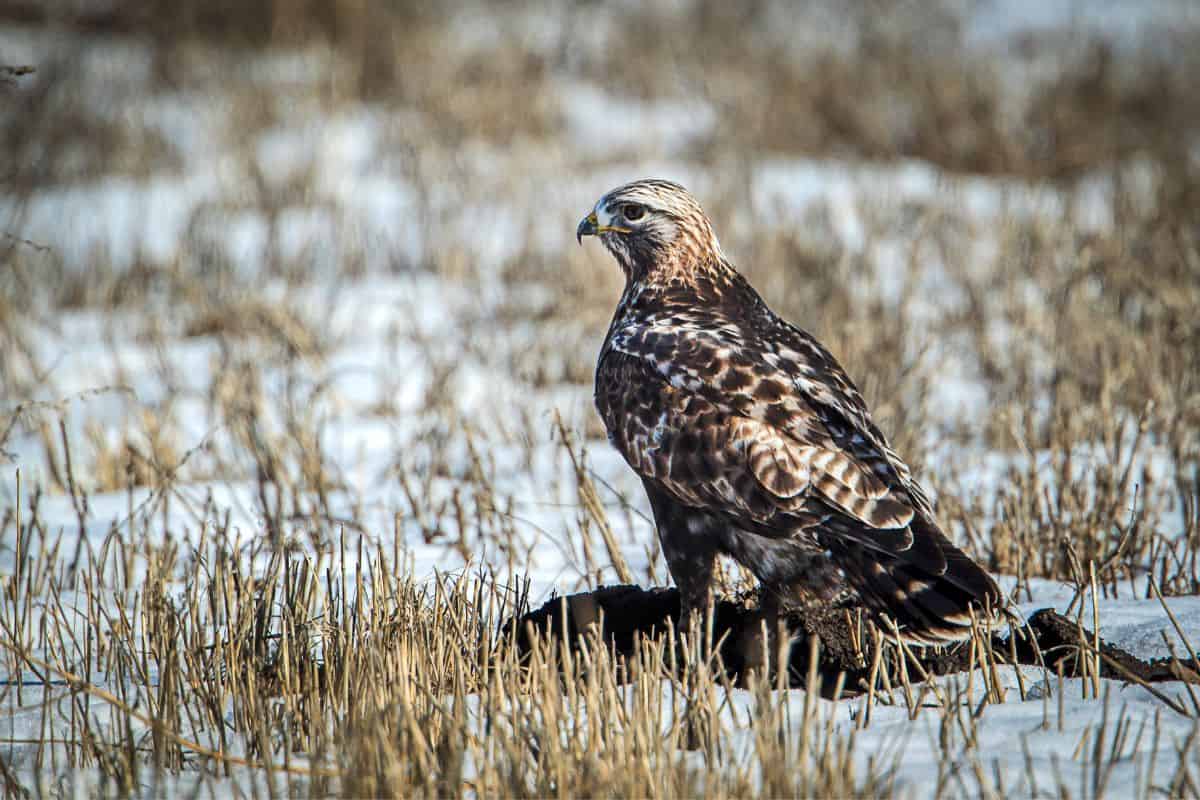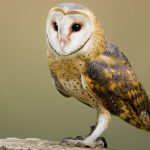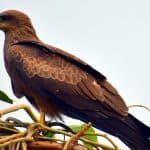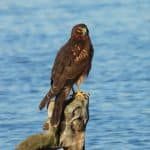Common Name: Rough-legged Hawk
Scientific Name: (Buteo lagopus)| Size | Diet | Range in Hawaii | Status in Hawaii |
|---|---|---|---|
| 18 in. - 22 in. | voles, mice, lemmings, and occasionally rabbits | Kaua'i and Maui | Least Concern |
The Rough-legged Hawk (Buteo lagopus) is a majestic bird of prey that is known for its impressive hunting skills and striking appearance. With its unique feathering that extends down its legs to the base of its toes, this hawk is well-adapted to surviving in cold, frigid environments.
Although it is not a native species to Hawaii, the Rough-legged Hawk has been spotted occasionally on the islands, making for a rare and exciting sighting for birdwatchers. In this article, we’ll explore the fascinating world of the Rough-legged Hawk and learn more about its unexpected presence in Hawaii.
Rough-legged Hawk
Appearance
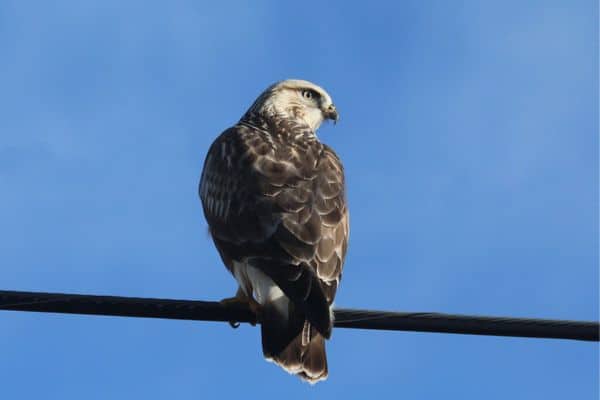
The Rough-legged Hawk is a medium-sized raptor with distinct characteristics. It has a wingspan of approximately 52 to 55 inches (132 to 140 cm) and a body length of about 18 to 22 inches (46 to 56 cm).
This hawk displays a variety of color morphs, but commonly exhibits a pale underside and dark belly band. Its plumage often features dark patches on the wrists and a white tail with a dark terminal band. The Rough-legged Hawk also has feathered legs, which is a unique trait among hawks.
Diet
The diet of the Rough-legged Hawk primarily consists of small mammals, especially rodents. These may include voles, mice, lemmings, and occasionally rabbits. The hawk uses its keen eyesight to locate prey from perches or during hovering flights.
It employs a combination of soaring and hovering techniques while hunting, and it will swoop down to capture its prey with its sharp talons. Additionally, the Rough-legged Hawk may supplement its diet with birds, insects, and occasionally carrion when prey availability is limited.
Nesting
The Rough-legged Hawk constructs its nest on elevated locations such as cliffs, trees, or rocky outcrops. The nests are typically built with sticks and twigs and lined with softer materials like grasses and feathers. The female is primarily responsible for nest construction, while the male assists by providing materials. The nesting season usually begins in late spring or early summer.
Rough-legged Hawks are known to reuse their nests from previous years, often adding new materials to refurbish them. They typically lay a clutch of 2 to 5 eggs, with both parents taking turns incubating them for about 30 to 35 days. After hatching, the chicks are cared for by both parents, who provide them with food until they are ready to fledge, which occurs around 5 to 6 weeks of age.
The nests of Rough-legged Hawks are often found in remote and inaccessible locations, providing protection and minimizing disturbances. These hawks are known for their breeding in Arctic and subarctic regions, where they make use of the available nesting sites and adapt to the harsh environmental conditions.
Behavior
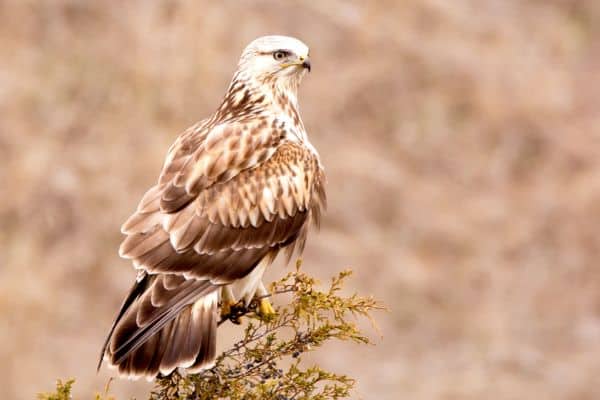
The Rough-legged Hawk displays various behaviors adapted to its hunting and survival strategies. It is known for its soaring flight, often seen circling high in the air while searching for prey. This hawk has excellent vision and can spot small mammals from a great distance. It hunts by hovering or soaring, and when prey is located, it swoops down with precision to capture it using its sharp talons.
Rough-legged Hawks are typically solitary birds, except during the breeding season when they form pairs. They are highly territorial and defend their nesting sites and hunting grounds from intruders. During courtship displays, they engage in aerial acrobatics, with impressive flight maneuvers and calling to communicate with their mate.
In terms of migration, Rough-legged Hawks are known for their long-distance movements. They breed in the Arctic and subarctic regions, and during winter, they migrate to more southern latitudes in search of food. This species has the unique ability to adjust its migration patterns based on prey availability, allowing it to adapt to changing environmental conditions.
Habitat
The Rough-legged Hawk inhabits a wide range of habitats, typically found in open and expansive landscapes. They are commonly associated with Arctic and subarctic regions during the breeding season, where they nest on cliffs, rock formations, or trees. In these northern habitats, they make use of tundra, taiga, and alpine meadows.
During the winter months, Rough-legged Hawks migrate to more southern latitudes, occupying a variety of habitats along their migration routes. They can be found in grasslands, agricultural fields, marshes, coastal areas, and open habitats with scattered trees or perches. This adaptability allows them to utilize diverse environments as they search for their primary prey, small mammals like voles and lemmings.
Rough-legged Hawks demonstrate a preference for areas with ample hunting opportunities and suitable nesting sites. They can thrive in both remote and human-altered landscapes, often tolerating the presence of human activity to some extent. Overall, their habitat selection is closely tied to the availability of food resources and suitable nesting locations within their range.
Range
The Rough-legged Hawk has been observed in Hawaii, with sightings reported on Laysan Island in the Northwestern Hawaiian Islands, as well as on Eastern and Sand Islands in the Midway Atoll. There is also a confirmed sighting on Kaho’olawe in the Southeastern Hawaiian Islands. Potential sightings have been reported on Koloa, Kaua’i, and Haleakala Mountain, Maui.
Conservation Status
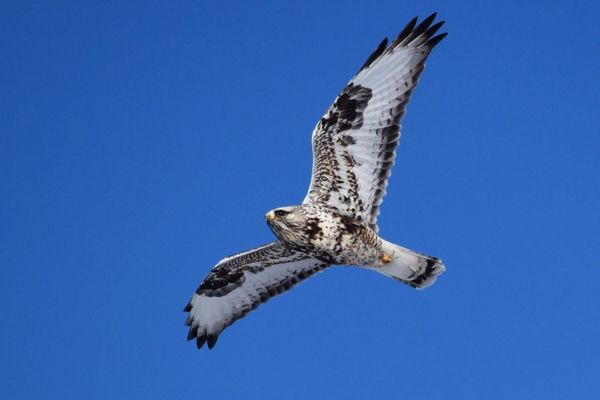
The conservation status of the Rough-legged Hawk is currently evaluated as being of Least Concern. This indicates that the species is not facing significant threats or population decline at a global level.
However, specific local populations or subspecies may face localized challenges or habitat loss, which can impact their conservation status on a regional scale. Monitoring and conservation efforts are important to ensure the long-term viability of the Rough-legged Hawk and its habitats.
Interesting Facts
1. Adapted for cold environments
The Rough-legged Hawk is well-suited for its Arctic and subarctic breeding grounds, with dense plumage covering its legs and feet, providing insulation against the cold temperatures.
2. Long-distance migrant
Rough-legged Hawks undertake impressive long-distance migrations. They breed in the far northern regions of North America and Eurasia, and during winter, they migrate to more southern latitudes, sometimes traveling thousands of miles to reach their wintering grounds.
3. Hovering hunters
These hawks are known for their exceptional hunting skills. They have the ability to hover in mid-air, scanning the ground for small mammals, their primary prey. Once a target is located, they perform a precise swooping descent to catch their prey.
4. Agile aerial acrobat
During courtship displays, Rough-legged Hawks exhibit impressive aerial acrobatics. They perform dramatic flight maneuvers, such as swoops, dives, and spirals, combined with vocalizations to attract a mate.
5. Muted coloration
The coloration of Rough-legged Hawks serves as effective camouflage in their habitats. Their plumage blends with the landscape, providing camouflage against predators and increasing their hunting success.
Frequently Asked Questions
1. Are Rough-legged Hawks social birds?
Rough-legged Hawks are typically solitary birds except during the breeding season when they form monogamous pairs. They defend their nesting territories and engage in aerial displays to attract a mate.
2. Can Rough-legged Hawks be kept as pets?
No, it is illegal and unethical to keep Rough-legged Hawks or any wild raptors as pets. They are protected under various national and international laws, and their complex needs and natural behaviors are best suited for the wild.
3. How long do Rough-legged Hawks live?
Rough-legged Hawks have an average lifespan of around 10-15 years in the wild. However, some individuals have been known to live up to 25 years or more under favorable conditions.
4. How can I identify a Rough-legged Hawk?
Rough-legged Hawks have distinctive features such as a dark belly band, light-colored head, and a pale underside with dark feathered legs. They also display a hovering behavior while hunting, which is unique to this species.
